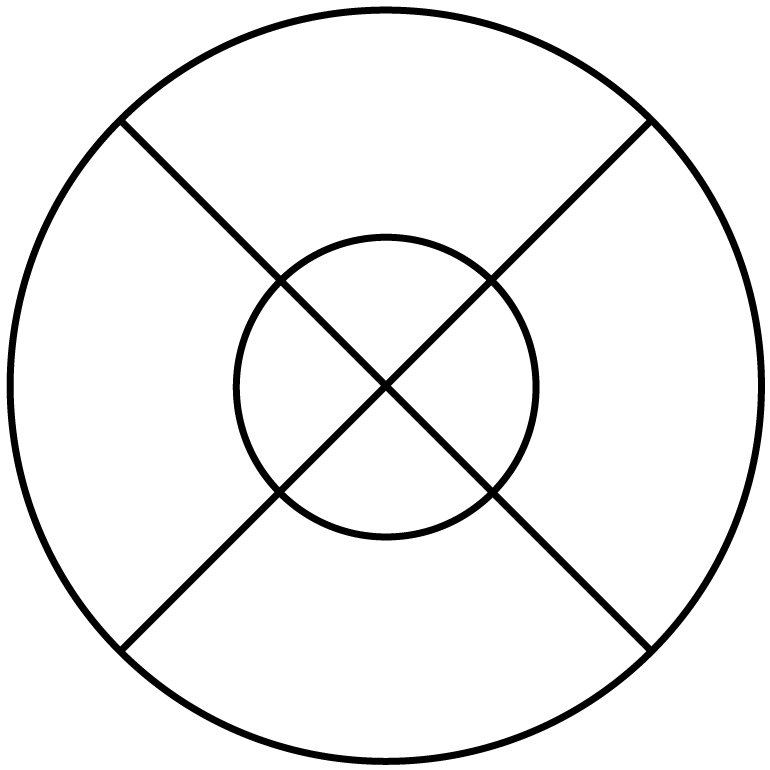Duration
1 class (45 minutes – 50 minutes)
Objective
Students will explore Waponahkewiyik Worldview and Medicine Wheel Teachings
Materials
- Whiteboard / Blackboard / Chart paper and markers
- Paper and writing materials
- Printed Medicine Wheels (Supplemental Materials, Lesson Plan A, Activity 1, or students can just draw their own)
- Art Supplies – markers, coloured pencils, paper, newspapers & magazines, bits of fabric, etc.
- Optional – Teachers Laptop and Internet
Opening (10 minutes)
- Introduce the concept of worldview to your class. Write the word Worldview on the board and discuss its meaning. Write down keywords and any images suggested by students during this brainstorming activity. Some examples of things your students may come up with include:
- “It’s like the way we see the world, right? Like our beliefs and ideas about life.”
- “Isn’t it how we think about stuff, like what’s right and wrong, or how things work?”
- “It’s like wearing glasses, but instead of glasses, it’s our thoughts that shape how we see things.”
- “Is it about culture and how we’re brought up to see things?”
- “I think it’s about our values and what we think is important.”
- Introduce Waponahkewiyik (Wabanaki) Worldview, emphasizing close relationships and connections with nature. It is recommended to have an Elder join your class to do this. If this is not possible, refer to background notes for teachers.
- Ask if students have heard of the Medicine Wheel before.
Activity
Medicine Wheel Overview (15 minutes)
- Explain the basic concepts of the Medicine Wheel (detailed in the background notes for teachers) such as the four colours, four directions, four elements, four seasons and four stages of life. (You may also show What is the medicine wheel by Tribal Trade on YouTube, but please note that the speaker is Anishinaabe and their medicine wheel is slightly different than a Waponahkewiyik medicine wheel. Please be prepared to teach your class about some of the differences afterward.)
- Discuss how Medicine Wheel teachings represent interconnectedness, balance and harmony, and how these are important in our world.
- Ask students to share their thoughts on how these concepts might apply in their daily lives. Some examples of questions to prompt discussions include:
- How are each of the elements (Earth, Water, Air and Fire) essential for life? What happens if the elements are out of balance? Can you give an example of how they are out of balance today?
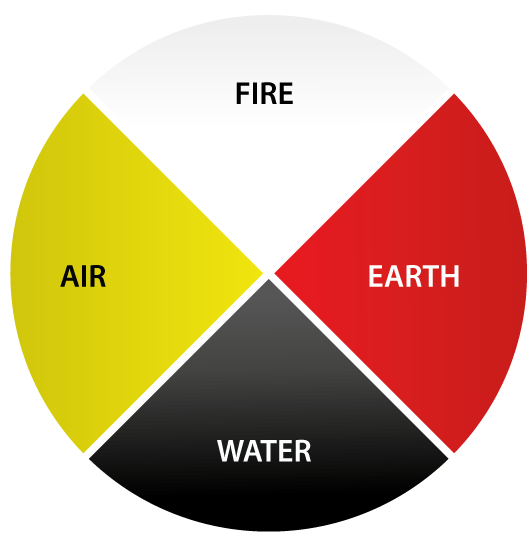
- How are the stages of life (Birth, Youth, Adulthood, Elderhood) similar to the seasons? Can you give some examples?
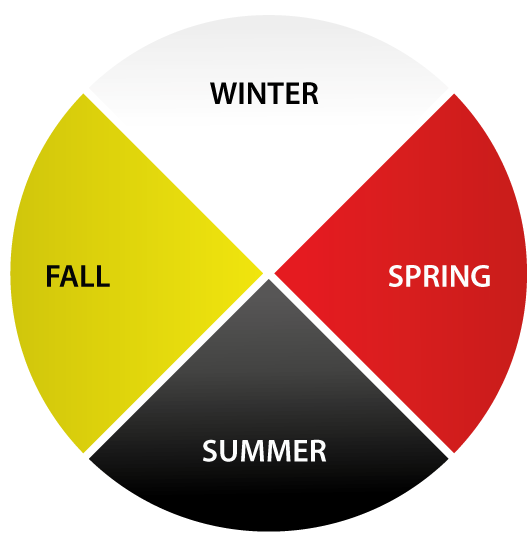
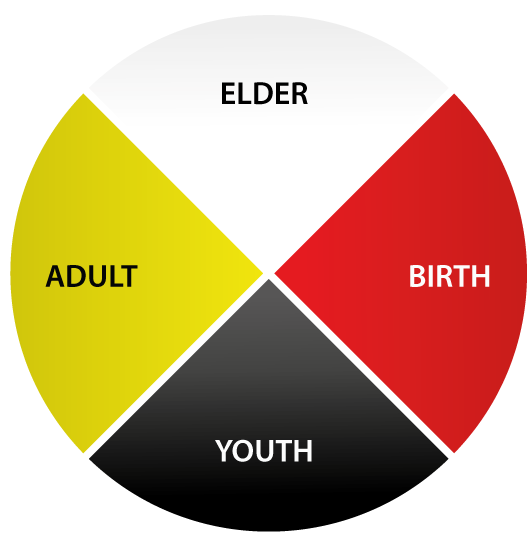
- How do you take care of your spirit, emotions, body and mind? What happens if these are out of balance?
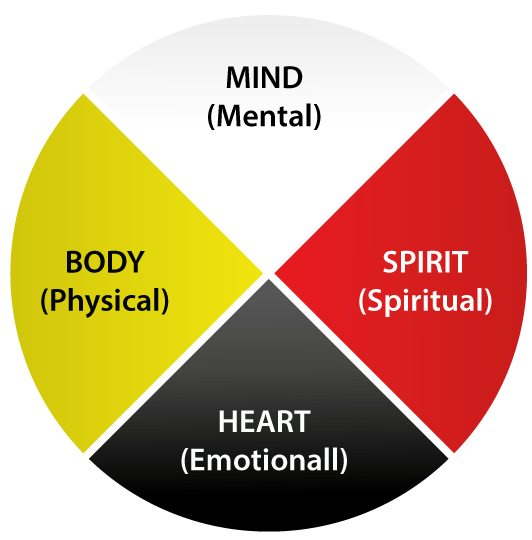
- How are each of the elements (Earth, Water, Air and Fire) essential for life? What happens if the elements are out of balance? Can you give an example of how they are out of balance today?
Artistic Expression (20 minutes)
- Provide art supplies and invite students to create artwork inspired by what they have learned about Medicine Wheel teachings.
- Students can draw Medicine Wheels or use a template provided. They may draw their representations or create a collage from newspapers, magazines and fabric. They may also combine all materials.
- Ask them to label their quadrants.
- OPTION – Have students write up a brief summary about their Medicine Wheels, reflecting on their choices and the relationships shown within.
Closing (5 minutes)
- Display and Discuss students’ artwork.
- Reiterate the importance of balance and interconnectedness in our world and in our lives.
- Encourage students to think about the lessons they learned as they go about their day, particularly when they are outside. (Activity 3 involves a nature walk to do this more formally.)
Extension
- Encourage them to draw one piece of artwork showing balance and harmony and one piece of artwork showing what happens when one of the quadrants goes out of balance. This will help them to focus on the relationships between all quadrants.
- Use the Wolastoqey and Mi’kmaq language tables that are integrated in the background notes for teachers as you go about this lesson.
Evaluation
Pre-Assessment: Participation in opening questions and engagement in class discussion.
Formative / Student-Engaged Assessment:
- Are students engaged in the process?
- Are they able to discuss Waponahkewiyik worldviews and Medicine Wheel teachings with respect?
- Are they able to analyze artistic intent in their work, including writing about or discussing the ideas behind their work?
Summative Performance Task: Final Medicine Wheels projects
*Please see Crayola’s Medicine Wheel lesson plans for models of artwork you can show your class, or for lesson alternatives: https://www.crayola.ca/education/lesson-plans?q=medicine+wheel
Grade 6: Lesson Plan A: Activity 1
Medicine Wheel – Simple
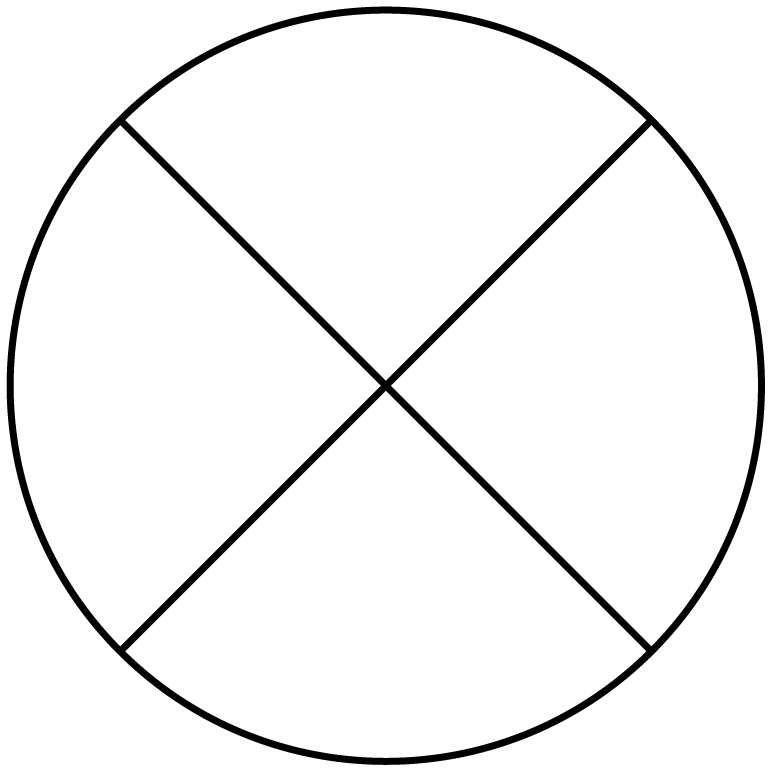
Grade 6: Lesson Plan A: Activity 1
Medicine Wheel – Multi-layered, Showing Outer World and Inner World
